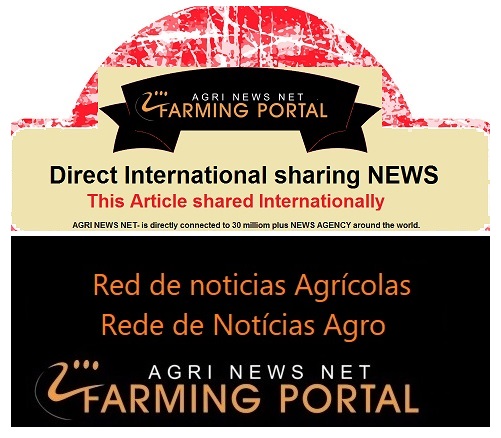World Farming Agriculture Commodity news - Weekly Updated - Exclusive and very popular - Delivering a Media service 365 days of the year.
South and Southeast Asia’s demand for grain and oilseed imports and the opportunities for Australian exports are influenced by several factors, including demographics, purchasing power, and land use. As the populations and GDP of the regions grow, the demand for wheat and feed grains is expected to increase. Pulses have strong growth potential as well, but their seasonality is influenced by India's harvests and import duties. As South and Southeast Asia shift toward Western diets, Australian grain sales are likely to benefit, as Australia's geographic proximity provides a competitive advantage compared to other major grain exporters. But changes in the global geopolitics are expected to impact trade dynamics, potentially reducing buying power across many Asian countries and affecting Australian farmgate prices. Furthermore, food self-sufficiency is a national priority across both regions, with governments emphasising it through policies that simultaneously boost local production and attempt to regulate food imports. These factors collectively shape the import needs of South and Southeast Asian countries and present opportunities for Australian grain exports.
Here’s a concise summary of the Bank of America (BofA) report on global energy and oil demand trends as of March 09, 2025:
-
Oil Demand Nearing Peak: BofA predicts global oil demand is approaching its peak and will struggle to grow beyond 1% annually through 2030, despite the rise of energy-intensive AI infrastructure.
-
Global Energy Growth Slowing: Energy consumption growth is expected to stay below 3% year-on-year into 2030, driven by a decline in global GDP growth from 6.5% (2000s) to 4.9% this decade, with structural challenges in China and Europe limiting it to 3%-3.5% in the near term.
-
Crude Demand Decline: Crude oil demand growth is forecast to drop from 1.1 million barrels per day in 2025 to just 400,000 by 2030, reflecting weaker economic activity.
-
US Exception: The US may see stronger energy demand due to a robust economy and AI data centers driving power needs to a 20-year high, but renewables—especially solar—will meet much of this demand rather than oil.
-
Renewable Energy Surge: Globally, the shift to green energy, including solar and wind, is curbing oil use. Even oil-rich Saudi Arabia is reducing crude and fuel oil in its power sector, accelerating the transition.
-
Policy Impact Limited: Despite potential US policy shifts under a Trump administration, BofA believes the worldwide momentum for renewables and energy transition spending will persist.
-
Broader Debate: BofA’s peak oil demand forecast aligns with ongoing discussions between OPEC and the IEA, highlighting differing views on future energy trends.
In essence, BofA sees a world where oil demand growth weakens significantly by 2030, overshadowed by economic slowdowns and a robust shift to renewables, even as AI boosts power needs.

Here’s a concise summary of the main highlights for Australia’s key commodities based on the provided text:
-
Wheat and Barley: Global wheat prices dropped due to weather issues, increased US wheat area, and potential Ukraine peace talks, pushing CBOT prices down. Australian prices, however, rose post-harvest.
-
Canola: Vegetable oil prices adjusted due to global policy shifts and tariffs, with concerns over 2025/26 North American soybean and canola supply amid geopolitical tensions.
-
Dairy: Farmgate prices in southern Australia increased, with optimism for further rises in 2025 due to stronger commodity returns.
-
Beef: Cattle prices remained stable, with gains in heavy/finished cattle linked to higher US import prices. Good seasonal conditions support restocker prices, though high inventories cap growth.
-
Sheepmeat: Trade and export lambs performed well with rising US import prices ahead of Easter demand. Store stock prices are steady but limited by southern seasonal conditions.
-
Cotton: ICE #2 Cotton futures fell 3.9% as funds hold a large net-short position, despite expected tighter global supply from lower US production.
-
Wool: Eastern and Western Market Indicators stayed flat month-on-month, with future Chinese demand uncertain due to US tariffs.
-
Consumer Foods: Coles outperformed its rival in December 2024 same-store sales, while food inflation rose in February due to higher fresh produce prices.
-
Farm Inputs: Urea and phosphate prices are high and unaffordable in many regions due to supply constraints, likely reducing global demand.
-
Interest Rate and FX: The RBA cut rates in February, with the Australian dollar slightly weaker. Two more 0.25ppt cuts are expected in 2025, with further currency softening forecast.
-
Oil and Freight: Geopolitical risks prop up energy prices, but container freight rates are declining. Brent crude is projected at USD 70/bbl in 2025.
This summary captures the key trends and outlook for Australia’s major commodities as of March 09, 2025.
 World Farming Agriculture and Commodity news - Short update 3rd March 2025
World Farming Agriculture and Commodity news - Short update 3rd March 2025

CME lean hog futures increased on Thursday, supported by strength in grain markets, following U.S. President Donald Trump’s decision to temporarily exempt Mexico from steep tariffs imposed earlier in the week.
Mexico’s Role: As the largest buyer of U.S. pork, corn, and wheat, Mexico’s tariff exemption eased fears of export disruptions that had previously pressured hog futures.
Specific Gains: The April hog contract rose 1.950 cents to 86.650 cents per pound, and June hog futures gained 2.450 cents to 97.025 cents per pound.
Tariff Details: Trump announced the exemption on Truth Social, initially mentioning only Mexico (expiring April 2), but the signed amendment also includes Canada, both part of the U.S.-Mexico-Canada Agreement from his first term.
Cattle Futures Decline
Market Shift: Cattle futures dipped as reduced trade tensions ensured Mexico’s continued supply of feeder cattle to U.S. ranchers.
Expert Insight: Don Roose of U.S. Commodities noted that Mexico supplies 100,000 head of feeder cattle monthly, and the tariff rollback normalized trade, easing supply cost concerns.
Specific Drops: April live cattle fell 0.275 cents to 196.275 cents per pound, and April feeder cattle dropped 1.650 cents to 274.425 cents per pound.
Additional Pressure: Falling Wall Street equity markets raised worries about consumer demand for pricey beef cuts, further weighing on cattle futures.
Summary
Hog futures rallied due to tariff relief for Mexico, a key U.S. agricultural export market, while cattle futures softened as trade stabilized and broader economic concerns emerged. This reflects market reactions as of March 09, 2025. Let me know if you’d like further analysis!
Mexico’s Role: As the largest buyer of U.S. pork, corn, and wheat, Mexico’s tariff exemption eased fears of export disruptions that had previously pressured hog futures.
Specific Gains: The April hog contract rose 1.950 cents to 86.650 cents per pound, and June hog futures gained 2.450 cents to 97.025 cents per pound.
Tariff Details: Trump announced the exemption on Truth Social, initially mentioning only Mexico (expiring April 2), but the signed amendment also includes Canada, both part of the U.S.-Mexico-Canada Agreement from his first term.
Cattle Futures Decline
Market Shift: Cattle futures dipped as reduced trade tensions ensured Mexico’s continued supply of feeder cattle to U.S. ranchers.
Expert Insight: Don Roose of U.S. Commodities noted that Mexico supplies 100,000 head of feeder cattle monthly, and the tariff rollback normalized trade, easing supply cost concerns.
Specific Drops: April live cattle fell 0.275 cents to 196.275 cents per pound, and April feeder cattle dropped 1.650 cents to 274.425 cents per pound.
Additional Pressure: Falling Wall Street equity markets raised worries about consumer demand for pricey beef cuts, further weighing on cattle futures.
Summary
Hog futures rallied due to tariff relief for Mexico, a key U.S. agricultural export market, while cattle futures softened as trade stabilized and broader economic concerns emerged. This reflects market reactions as of March 09, 2025. Let me know if you’d like further analysis!


















